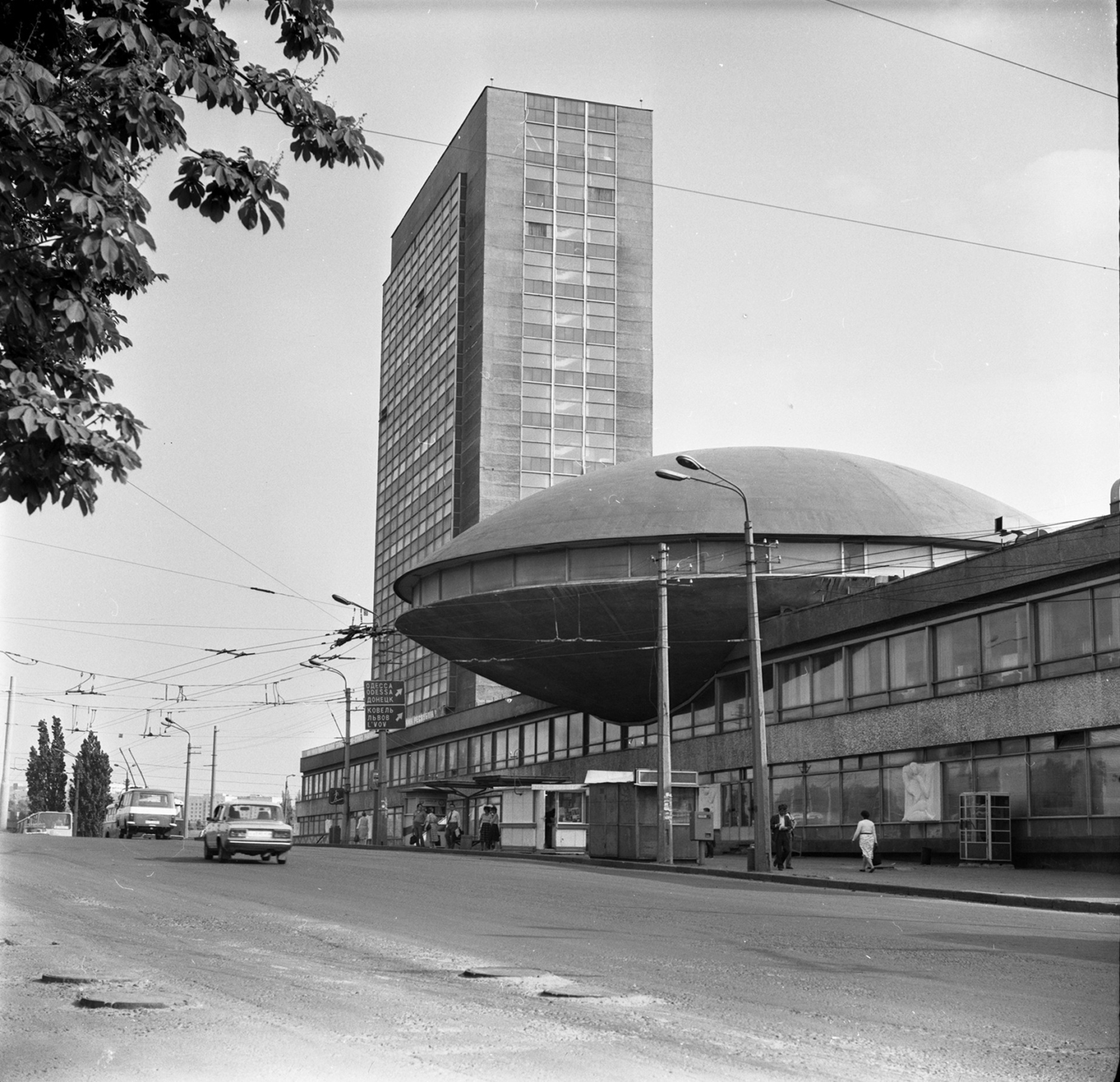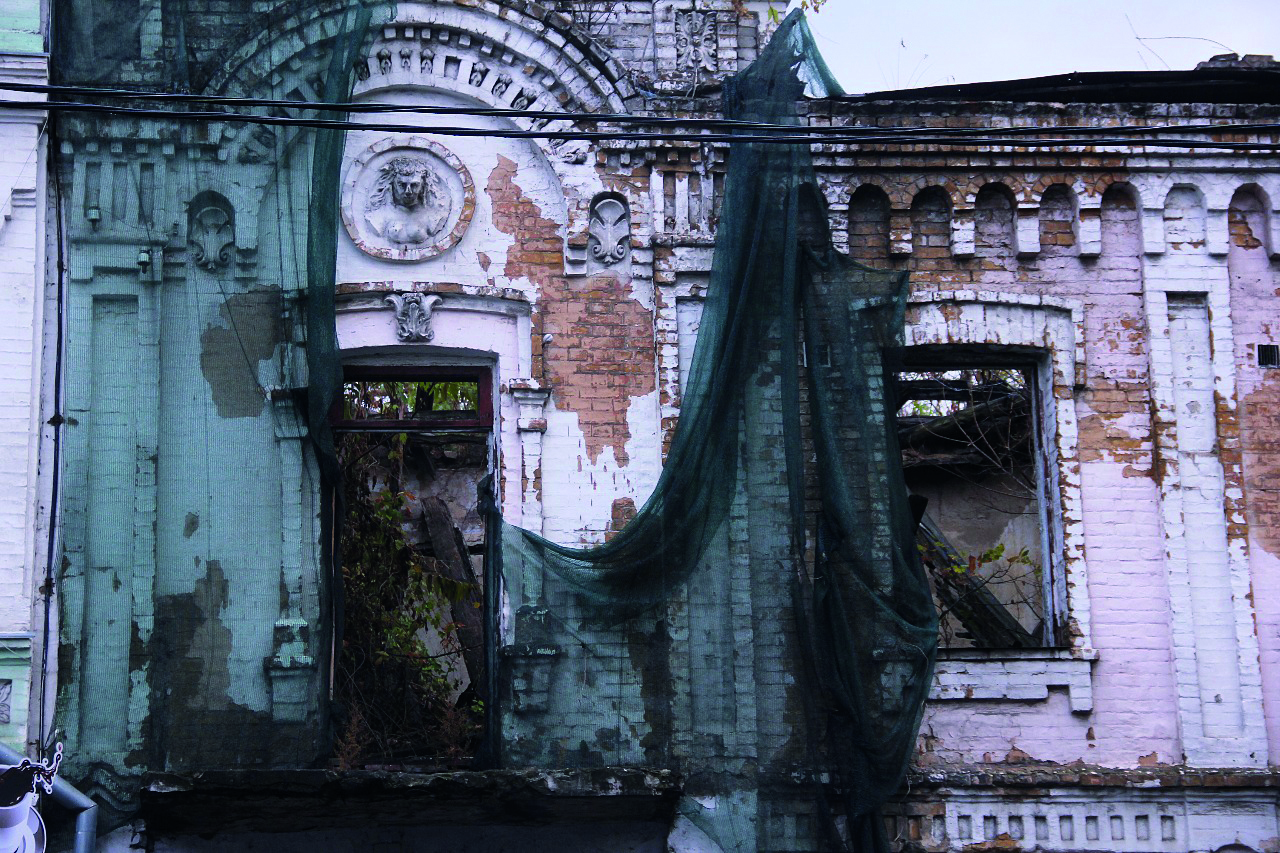The UFO Building: a monument to Soviet modernism and the “space age”

It stands out. Architectural digests worldwide cite its significance, yet here in Kyiv that is understated. It is futuristic and undoubtedly cool.
This grey decrepit building near the Lybidska metro station (Antonovycha 180) catches your eye from afar – one of its sections features the odd shape of an UFO hovering 10 metres above the ground. This futuristic edifice dominates the urban landscape and has already become an integral part of Kyiv. However, it is widely known in architectural circles and applauded, yet, it is under threat. Only a few people know it is part of the complex of Ukraine’s Institute of Scientific, Technical and Economic Information and State Scientific and Technical Library – and is a remarkable example of Soviet modernism dating back to 1971.
Its extraordinary look, including its plain but remarkable form and large glass surfaces drew inspiration from the space race; the Cold War competition between the US and USSR to enhance each countries’ aerospace capabilities.
“It was the first skyscraper with a glass façade built in Kyiv at that time”, says Lev Shevchenko, an architecture researcher. “It resembles New York’s Secretariat Building”.
The ‘flying saucer’ element was the brainchild of one-man-orchestra Florian Yuryev – a Russian-born Ukrainian artist, architect, inventor, composer, musician, scientist, violinist, poet, and public figure.
The structure would go on to be a unique concert and event venue that would ideally combine colour, light and music to demonstrate the ‘synthesis of the arts’. The hall was constructed in the form of two connected hemispheres suspended on self-supporting structures. Some experts say this decision was motivated by practical considerations: the pedestrian walkway was too narrow, and the architect was forced to place the theatre on pillars. The acoustic system was supposed to spread the sound with equal amplitude and timbre to each of the five hundred spectator seats. However, Yuryev’s central idea was not implemented – costs were considered – the colour and music theatre were attached to an ordinary, though acoustically perfect, conference hall. KGB officials might have convened there, who knows…
Soviet architects would continue to apply bold engineering approaches to create experimental buildings; but the technology and materials were of a poor quality. Furthermore, they had tight budget restraints: Moscow would reluctantly allocate finances, and construction works were intended to last 10-15 years. Therefore, these buildings are vulnerable and decay quickly.
Nearly 50 years later, the modernist ‘UFO’ still has not gained the official status of an architectural monument, a status which threatens its existence. To aggravate its sad condition, the shopping mall Ocean Plaza was built nearby, the subway line was extended, and the tallest Orthodox Church in Europe emerged in the vicinity. Authorities claimed they had no budget to maintain the structure, let alone repair it.
Recently the Ministry of Education announced next year the ‘flying saucer’ would accommodate Ukraine’s first museum of science. Under the public-private partnership, the investor is required to build an unparalleled education/exhibition space with an exposition zone (chemistry, physics, underwater world, robots, etc), scientific theatre, zero gravity zone, labyrinth, and more. The estimated costs amount to 150 million UAH ($5.6 million USD). Polish experts who helped develop Warsaw’s Copernicus Science Centre have pledged to contribute to the project.
“I think, the museum will occupy only the long two-storey part of the building”, explains Shevchenko. “The high-rise block is out of service. The premises has tight space with low ceilings. The staircases and lifts do not meet present-day standards. On one hand, the Institute has its historical value, on the other – it is non-functional now”.
How to save an international work-of-art remains up-in-the-air.
He argues the best solution to preserve Ukraine’s pearls of architecture is to update communication, change the cladding, and upgrade facilities without altering the overall design.
“So far, let’s wait and see what new life ‘the flying saucer’ will have, after all”…
Nonetheless, this building still attracts attention in creative circles, as it will be a key venue for The Kyiv International – Kyiv Biennial 2017, a forum for art and knowledge that will take place from 20 October to 26 November. There may be life in the old girl yet.











